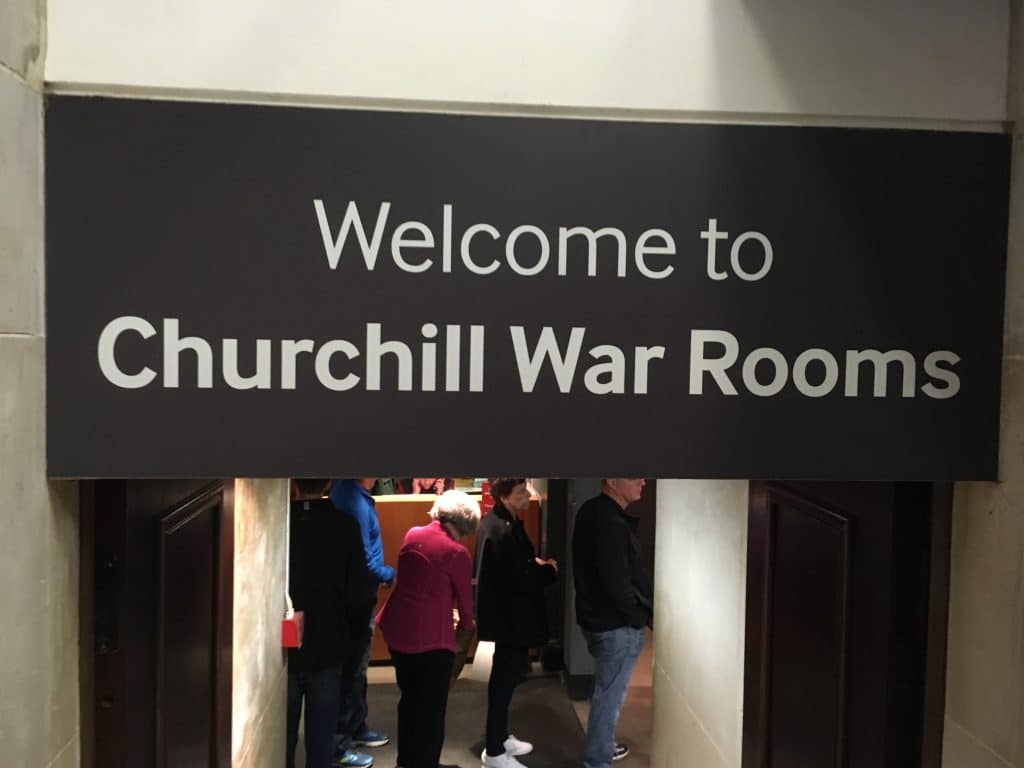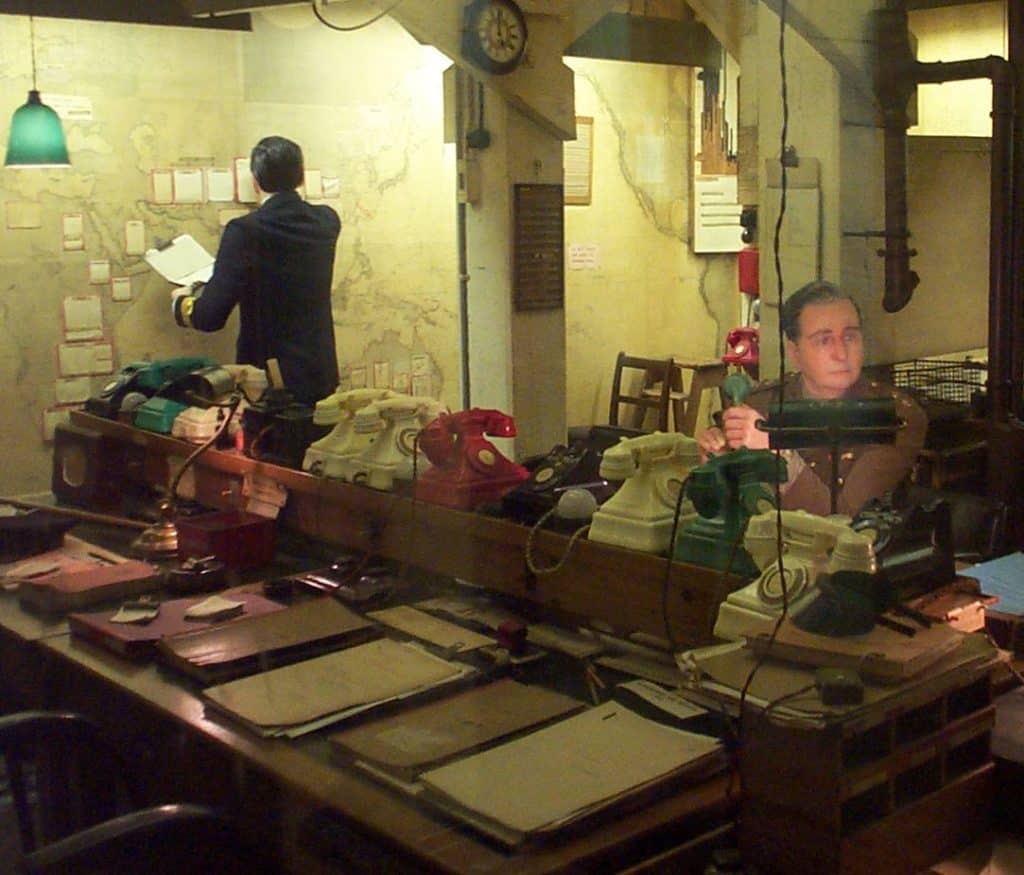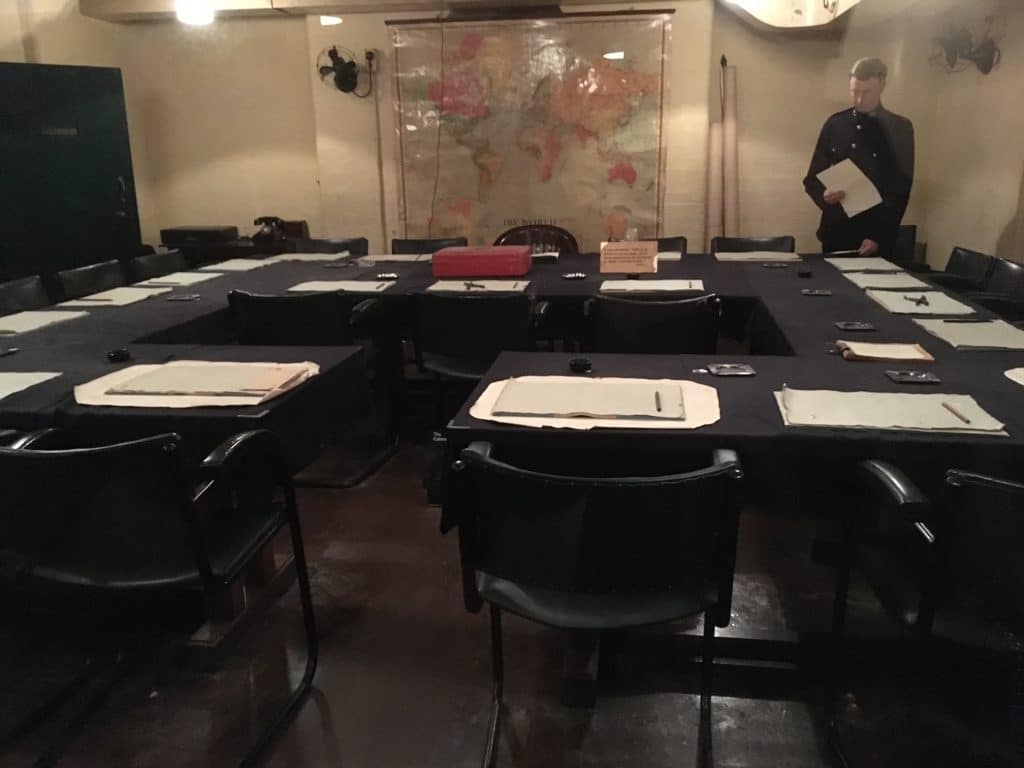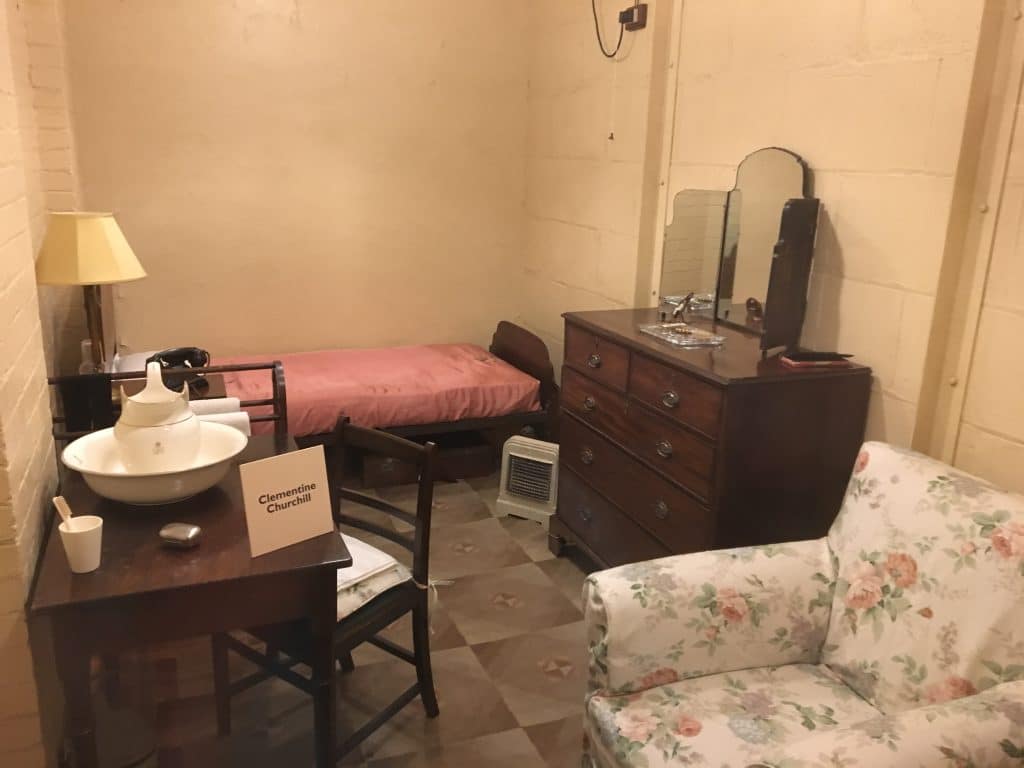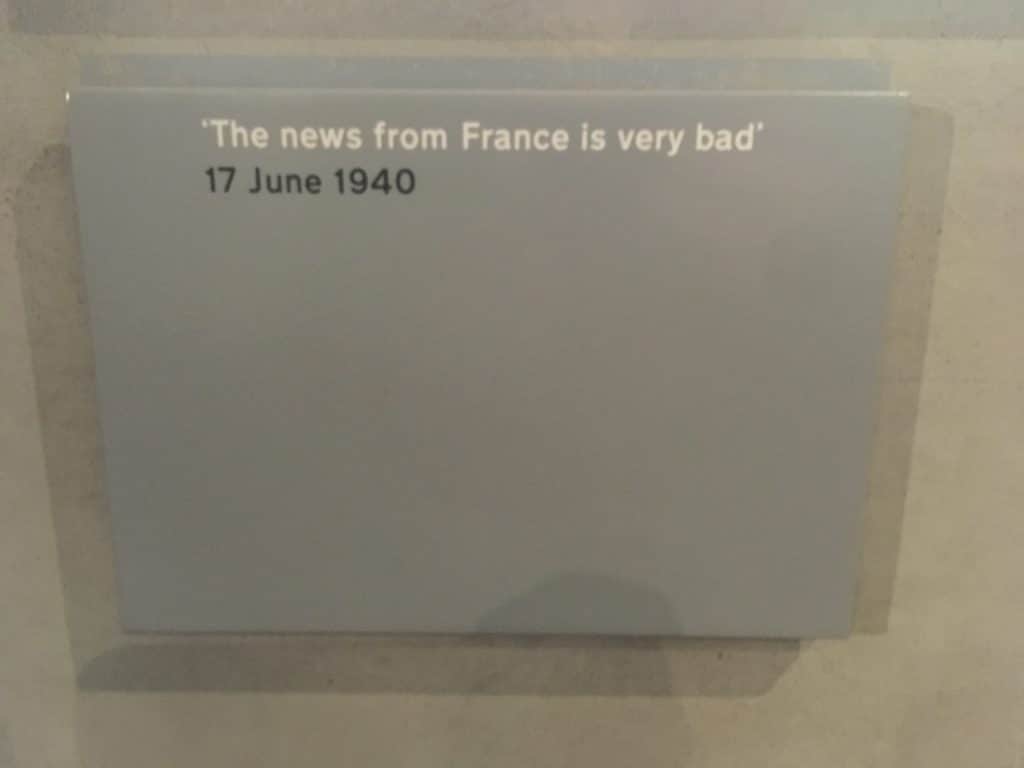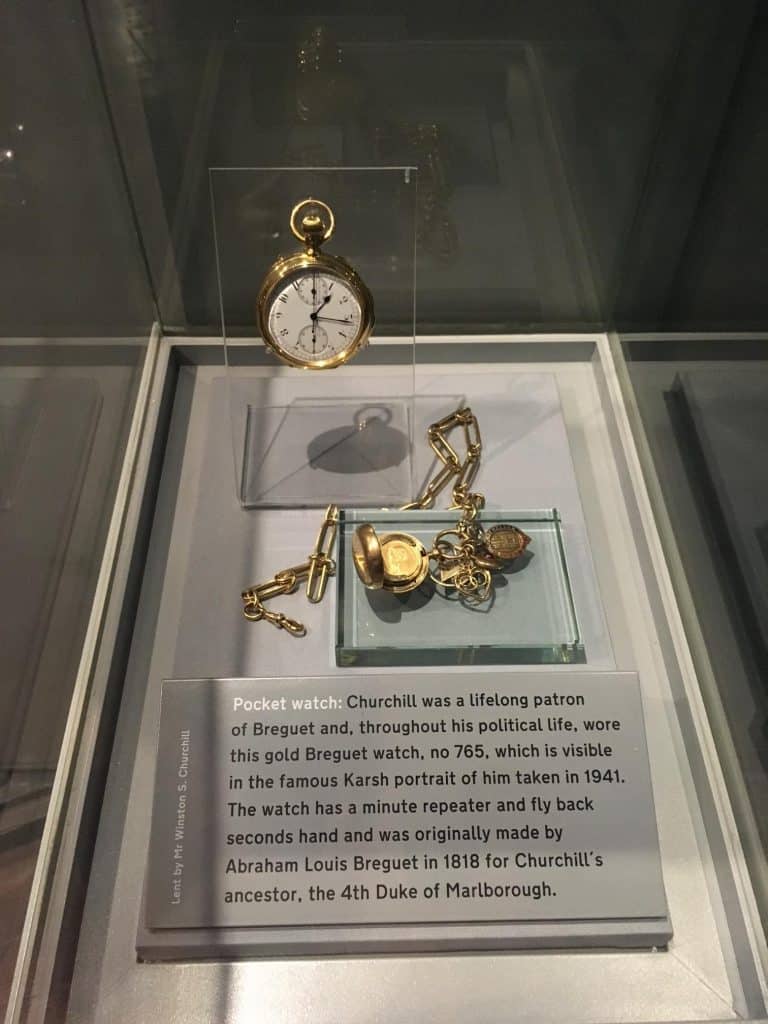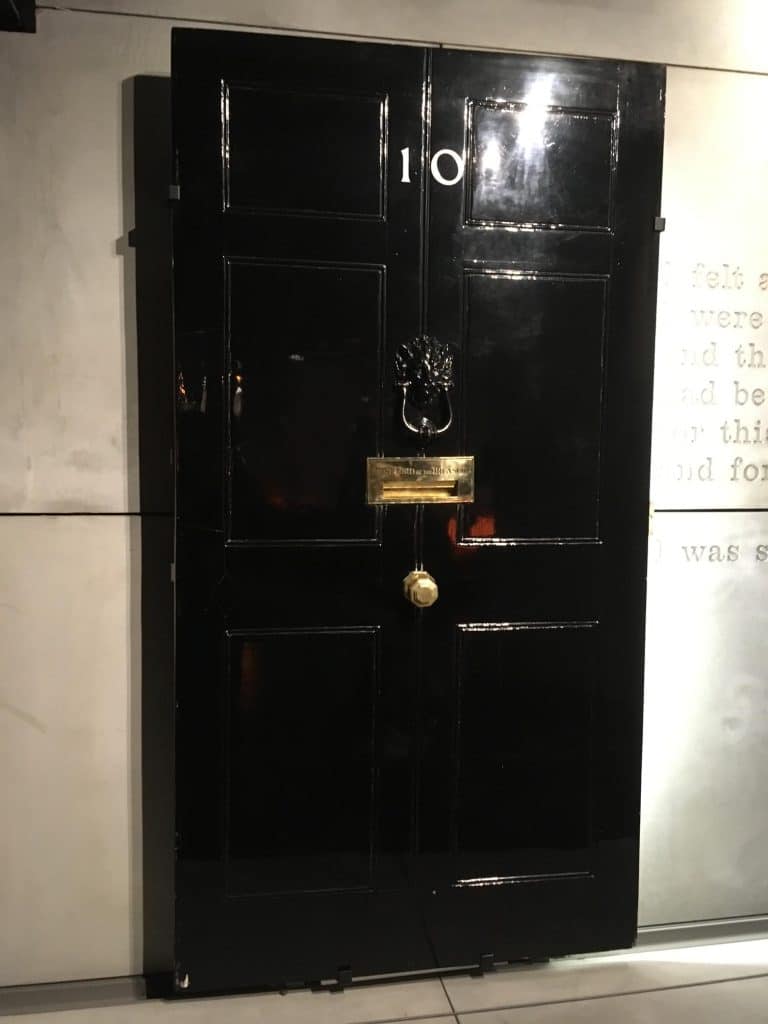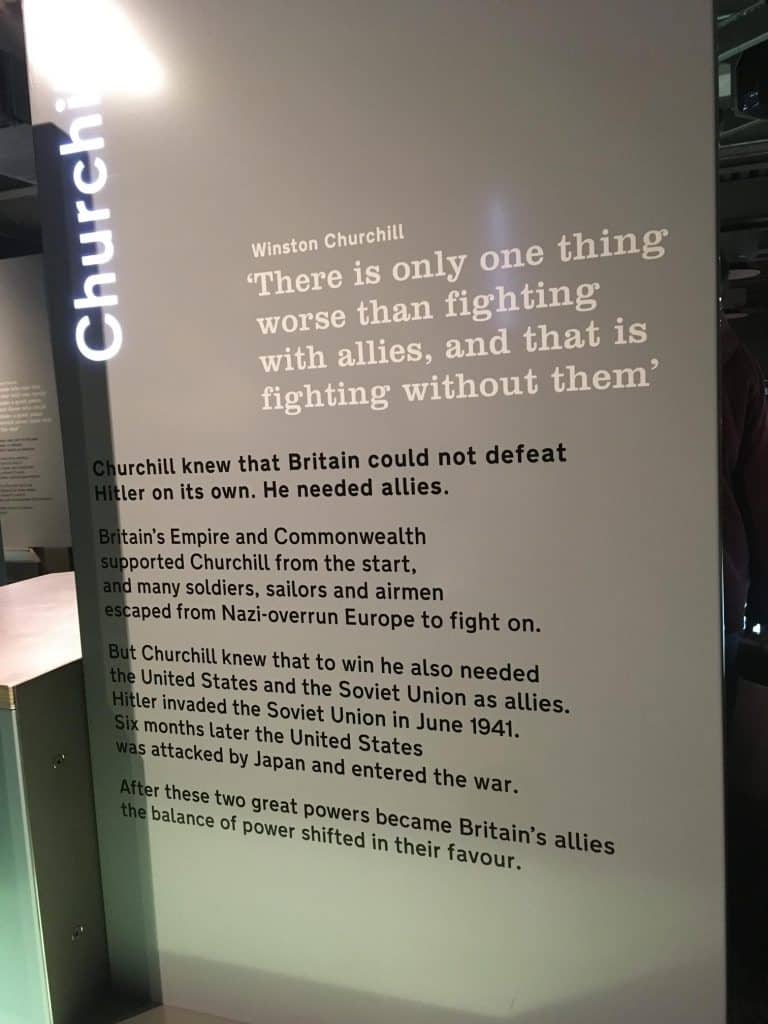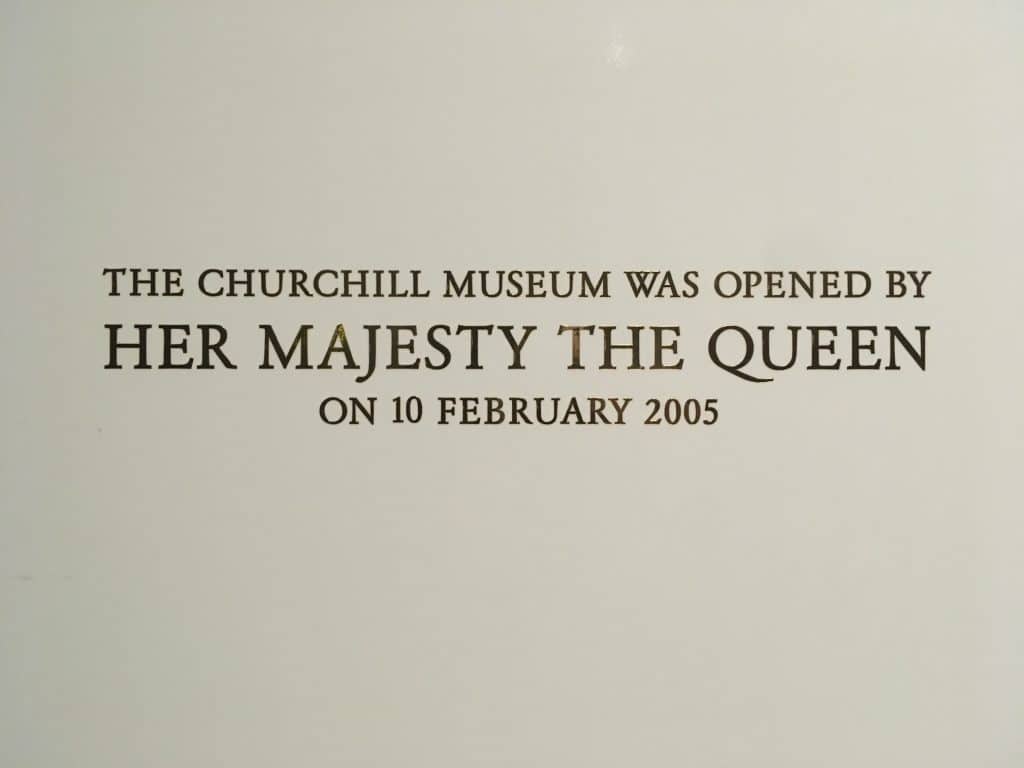Visiting the Churchill War Rooms
Winston Churchill led the United Kingdom through some of its darkest days during his first tenure as Prime Minister from 1940 to 1945. This was World War II and the British government was based in the War Rooms, a series of underground rooms in Whitehall. These rooms served as the heart of the government during the war. The Churchill War Rooms are now open to the public as an award-winning museum. The museum is spread over two floors, covering the history of the War Rooms and Churchill’s life during the war. We last visited the Churchill War Rooms in 2016 but still talk about them. If you’re a history buff interested in learning more about Churchill and his wartime experience, visiting the Churchill War Rooms is a must do.
the Churchill War Rooms
The War Rooms are a fantastic exhibit for history geeks, as they explore twisting and turning hallways that lead to various sections of the War Rooms. You will come across the Map Room, Transatlantic Telephone Room, Mrs. Churchill’s bedroom, and even the space where Churchill recorded broadcasts to the British public during World War II. These are the real spaces used at the time with a lot of original pieces, although some have been recreated and there are mannequins in period clothing to add to the exhibit.
The Map Room
The Map Room is one of the most exciting parts of the Churchill War Rooms. It was the nerve center of operations during World War II. It’s where the British government tracked the movement of Allied and Axis forces’ movement worldwide. The room has been left exactly as it was when the War Rooms were abandoned in 1945. It’s a fascinating glimpse into the technology of the time.
The Map Room included a “beauty chorus” of various colored phones to avoid confusion. They never rang– they only lit up. The armed forces were linked to white phones, the outside world to red phones, and intelligence services to green phones. To maintain the secrecy of the War Rooms, all visitors had to pass through a series of airlocks.
The War Cabinet Room:
The center of action of the Churchill War Rooms was the War Cabinet Room. It’s where Churchill and his ministers met eye-to-eye to make some of the most important decisions of the war.
You can recognize Churchill’s chair by its distinctively high back. It was specially made to allow him to sit comfortably while wearing his famous siren suit. There are paper, pencils, and ashtrays on the tables. The room is set up as if a meeting is about to commence.
Mrs. Churchill’s Bedroom
Mrs. Churchill’s bedroom is also located on the site of the Churchill War Rooms. It’s a small but cozy room with a single bed and a desk. Churchill recorded many of his famous speeches in this room.
Churchill and Clementine had a close, intimate relationship that bore the brunt of the stress of war. This room is a testament to their love for each other. Churchill used this room as his bedroom office. He hosted meetings here, took his powerful hour-long naps, and ritualistically showered twice daily.
The Rooms go on
I was struck by how the knowledge we were underground never left. Each room barely had more than was necessary. If you’re at all claustrophobic, you might want to give visiting the Churchill War Rooms a miss as the corridors are fairly narrow and there aren’t any windows. Because it’s a staggered entry, though, the crowds aren’t too bad (at least they weren’t when we were there).
It’s interesting to note that these rooms were meant to be temporary–a lot of problems with them were recognized early on. As the war went on, however, it became clear that moving wasn’t going to happen and everyone made the best of it.
The Details You Can’t Miss:
There is an interactive gallery in the Churchill Museum with a 15-meter-long “Lifeline,” allowing visitors to visit each section to learn more about Churchill’s life in chronological sequence. The facts and details begin right from Churchill’s early life, his military campaigns, and his old age.
The photographs, documents, and artifacts on display are incredibly well-preserved and help bring the exhibit to life. You can read letters Churchill exchanged with his wife, see the famous “Victory” cigar he smoked after the Allied forces defeated Nazi Germany, and the original 10 Downing Street door. If you want to draw inspiration from the greatest wordsmith’s speeches, pause to hear clips of his most famous speeches, including “We Shall Fight on the Beaches” and “Blood, Toil, Tears, and Sweat.”
Getting There:
The address of Churchill War Rooms is Clive Steps, King Charles St, London SW1A 2AQ, United Kingdom. It opens daily between 9:30 am and 6 pm. However, the last admission is accepted at 5 pm.
You can go there by Tube; the closest station is Westminster. Other stations near Churchill War Rooms are St James’s Park and Green Park.
You can also hop on the train that stops at Charing Cross or Victoria and walk the remaining distance.
From Kings Cross St Pancras, you can take the bus numbers 11, 24, 148, or 211.
Ticket Details:
Tickets for adults start at £27.25 (as of February 2023). Ticket pricing for children aged between 5 and 15 start at £13.60. Seniors, students, Art-Fund members, and disabled persons can get ticket discounts. Children under the age of five aren’t charged. Booking ahead is highly recommended.
Tickets might seem pricey, but to me visiting the Churchill War Rooms is well worth it. They contain a piece of history that shaped the course of the world. Winston Churchill himself was a fascinating man. He knew how to talk, fight, and inspire. His speeches were electric, and his persona was larger than life. Visit Churchill War Rooms to feel the power of his words for yourself. It’s an experience you won’t forget.
If you want to visit more London museums, check out this list of more of the best!


